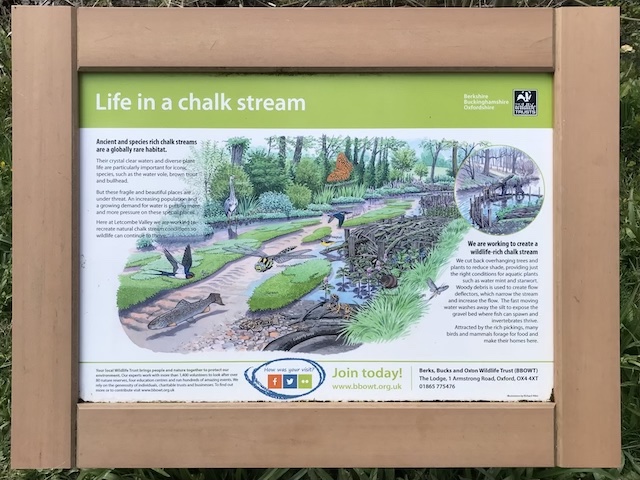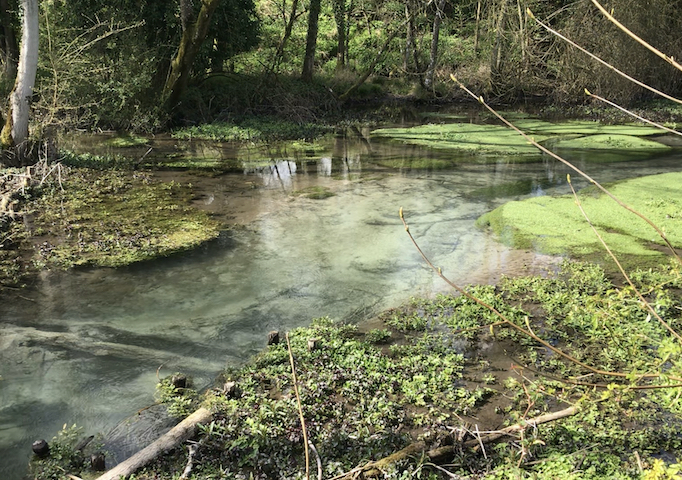On this afternoon’s walk we had the joy of arriving at a chalk stream. We had started high on the Ridgeway and descended quickly down through the Devil’s Punchbowl, a dry valley. And it was at the lowest point on our walk that we came upon Letcombe Brook. At this site, conservationist are working to recreate the natural conditions of a chalk stream to enable wildlife to thrive.
I learnt from the info panel about a bit of open channel engineering works used to encourage more fish to spawn. Using wooden debris, conservationists have built deflectors in the stream to narrow the current. In these narrower sections the faster water scours the river bed to expose the gravel bed, in which fish can better lay their eggs.
This is the sort of engineering intervention that I love. Working with the landscape and the materials to enhance an ecosystem and help it recover. It’s work that feels at a human scale. To build the deflectors pairs of parallel wooden shafts are driven into the bed, and between these long horizontal pieces are piled up in the current. (This is similar to how we build some of our fencing at Hazel Hill Wood, except here it is underwater.)
This is engineering we can do together.
Behind the deflectors the ground is muddy and full of life. As I sit there an egret picks its way past. Midstream the current is fast and clear. I could spend the whole afternoon there.
A big shout of appreciation to Berks, Bucks and Oxon Wildlife Trust for carrying out this work and providing us with such an excellent info panel.



Leave a Reply